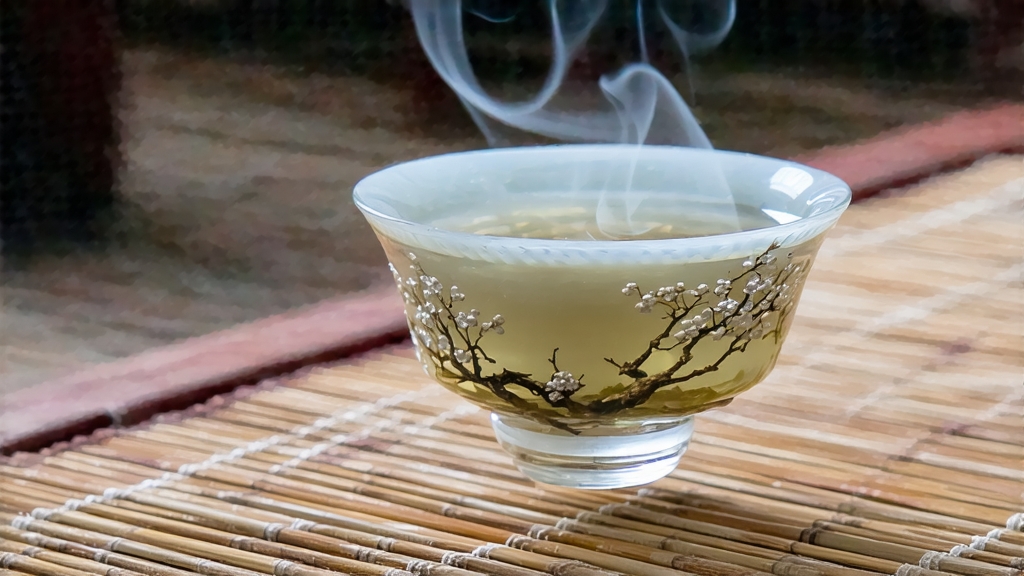
Among the six great families of Chinese tea, white tea is the least theatrical yet the most elusive; it is oxidised by nothing more than time and air, and within this minimalist lineage Bai Hao Yin Zhen—“Silver Needle”—reigns as the uncrowned emperor. To the uninitiated it looks like a pile of pale twigs, but in the presence of hot water those twigs uncurl into silent fireworks of aroma that have captivated emperors, poets and, more recently, sommeliers from Paris to Melbourne. This essay invites the international reader to follow the moon-lit path that leads from the granite soils of northern Fujian to the quiet moment when the first sip of Silver Needle grazes the palate.
-
Historical whispers
The first written record that can be confidently linked to Silver Needle appears in the Cha Pu (“Tea Register”) of 1796, during the Jiaqing reign of the Qing dynasty. Local chronicles note that the imperial court, weary of the heavily roasted tribute teas that arrived from the Wuyi Mountains, requested “a lighter gift that carries the breath of spring.” Tea makers in Fuding county responded by plucking only the unopened buds of the Da Bai cultivar, allowing them to wither under the high-altitude moonlight—hence the romantic nickname “moonlight tea.” By the late nineteenth century Silver Needle was being exchanged for Persian saffron and Russian furs through the treaty port of Fuzhou, and in 1915 it won a gold medal at the Panama-Pacific International Exposition in San Francisco, quietly announcing China’s most delicate tea to the wider world. -
Terroir and cultivar
Authentic Bai Hao Yin Zhen comes from two micro-regions protected by UNESCO’s Fujian Tea Birthplace buffer zone: Fuding and Zhenghe. Both counties sit just below the 27th parallel, where granitic parent rock weathers into sandy loam rich in potassium and magnesium. The Da Bai (“Big White”) tea tree is a landrace cultivar selected during the Song dynasty for its oversized buds—each can reach 3.5 cm in length and is sheathed in a down so dense it resembles hoarfrost. Because the buds are picked before the plant’s chlorophyll fully activates, they contain only trace amounts of bitter catechins but an unusually high ratio of the amino acid L-theanine, the molecule responsible for the tea’s signature umami-sweet calm. -
The craft of doing almost nothing
White tea’s minimalism is deceptive; the fewer the steps, the more unforgiving the craft. Picking begins at dawn on the first clear day after the spring equinox, when overnight dew still sheathes the bud and the temperature hovers between 12 °C and 16 °C. Experienced pluckers use a diagonal snap that leaves the petiole intact, preventing early oxidation. The buds are then transported in bamboo baskets lined with banana leaves to prevent compression; any bruise incurred during transit will later translate into an off “cooked apple” note.
Withering is the heart of Silver Needle alchemy. Traditionally the buds are laid on bamboo trays stacked inside drafty attics whose windows are opened or closed according to barometric pressure. For forty-eight hours the tea is left alone with the night breeze, the mountain mist and the occasional moonbeam. During this period moisture drops from 75 % to below 8 %, but enzymatic activity continues, generating floral terpenes (linalool, geraniol) and a honeyed compound called 2-acetyl-1-pyrroline—the same molecule that gives basmati rice its popcorn aroma. No pan-firing, no rolling, no baking: the tea is simply dried at 45 °C for twenty minutes to fix the fragrance, then hand-sorted to remove any stem that escaped the plucker’s fingernail.
- Grades and micro-seasons
Connoisseurs recognise three ascending grades within Silver Needle itself. “Court Needle” consists entirely of buds longer than 2.5 cm, plucked between 20–25 March, when the down is thickest. “Tribute Needle” blends slightly shorter buds picked during the last week of March, still pure but marginally less aromatic. “Heritage Needle” is a later harvest that may include the first unfolding leaf, giving a rounder liquor but sacrificing some of the